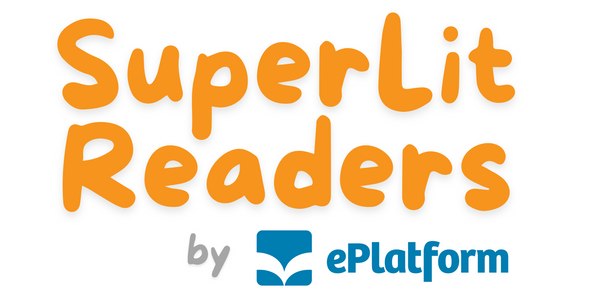Systematic Synthetic Phonics Explained for Teachers

Table of Contents:
1. What is Phonics?
2. What is Systematic Synthetic Phonics?
3. Why Is Systematic Synthetic Phonics Important in Early Literacy?
4. How to Teach Systematic Synthetic Phonics in the Classroom
5. Common Mistakes When Teaching Synthetic Phonics
6. Best Practices and Tips for Synthetic Phonics Success
7. Frequently Asked Questions About Systematic Synthetic Phonics
1. What is Phonics?
Phonics is the method of teaching children to read by correlating sounds with letters or groups of letters. In simple terms, it helps children "sound out" words by recognising the individual sounds (phonemes) that make up a word and matching those to written symbols (graphemes).
Phonics is the foundation of reading fluency and spelling, and there are various approaches to teaching it. Among them, synthetic phonics has become one of the most effective and widely adopted.
2. What is Systematic Synthetic Phonics?
Systematic Synthetic Phonics is a structured, explicit approach to phonics instruction. It teaches children to:
- Recognise individual phonemes (the smallest units of sound)
- Match them to graphemes (letters or letter groups)
- Blend these sounds to read new words (decoding)
- Segment words into sounds to write them (encoding)
The "systematic" part means sounds are taught in a planned, sequential order, starting with the simplest and progressing to more complex. The "synthetic" part refers to the way children are taught to synthesise sounds together to read full words.
This method is backed by research and recommended by numerous literacy authorities and government education departments.
3. Why Is Systematic Synthetic Phonics Important in Early Literacy?
SSP provides a clear, consistent pathway to reading success. Here’s why it’s so important in early years education:
- It builds decoding skills. Students don’t guess words from pictures or context—they sound them out using taught phonics knowledge.
- It supports spelling. Children learn to break words into sounds and connect those to written forms.
- It reduces reading failure. Particularly effective for students with learning difficulties or dyslexia.
- It aligns with curriculum expectations. Many countries now mandate or recommend systematic phonics as the foundation for literacy instruction.
The structured nature of SSP makes it easier for teachers to deliver consistent, measurable lessons and track student progress over time.
4. How to Teach Systematic Synthetic Phonics in the Classroom
SSP isn’t just about knowing the theory—it’s about implementation. Here’s how to teach it effectively:
4.1. Follow a Structured Synthetic Phonics Sequence
Start with common sounds and progress logically. A typical sequence might begin with sounds like /s/, /a/, /t/, /p/, /i/, /n/ because they can be quickly combined into decodable words.
Avoid teaching letters in alphabetical order. Instead, follow a carefully developed phonics scope and sequence to ensure early reading success.
4.2. Introduce Phoneme-Grapheme Correspondences
Explicitly teach how each sound maps to one or more letter combinations. For example:
- /k/ can be spelled as c, k, or ck
- /f/ can be spelled as f or ph
Use visuals, gestures, and repetition to reinforce each new correspondence.
4.3. Use Blending and Segmenting to Build Reading Fluency
Blending is combining individual sounds to form words. For example, /s/ /a/ /t/ becomes "sat."
Segmenting is breaking a word into its individual sounds for spelling. For example, "dog" becomes /d/ /o/ /g/.
Both skills are essential to fluent reading and writing.
4.4. Incorporate Decodable Readers at the Right Level
Use decodable readers that align with your phonics sequence. These texts contain only the sounds and words students have already been taught, allowing them to practice decoding in context.
This eliminates guessing and builds confidence.
4.5. Include Spelling and Writing in Phonics Lessons
Phonics isn’t just for reading—it’s equally important for spelling and writing. Encourage students to:
- Write phoneme-rich words and sentences
- Spell words using segmenting
- Build their vocabulary through connected writing tasks
5. Common Mistakes When Teaching Synthetic Phonics
Even experienced educators can make these common errors:
- Jumping ahead in the sequence before students have mastered earlier sounds
- Using picture cues instead of encouraging decoding
- Mixing approaches (e.g. whole language guessing strategies)
- Neglecting regular review and revision
Avoiding these pitfalls ensures your phonics instruction remains effective and consistent.
6. Best Practices and Tips for Synthetic Phonics Success
6.1. Use Explicit and Direct Phonics Instruction
Always teach new sounds explicitly. Model them, explain them, and practice them before expecting students to use them independently.
6.2. Review Previously Taught Sounds Regularly
SSP requires repetition and reinforcement. Build in quick, daily reviews of previously taught sounds, graphemes, and tricky words.
6.3. Support Diverse Learners with Scaffolded Phonics Activities
Different students learn at different speeds. Offer:
- Extra practice for struggling readers
- Extension activities for early finishers
- Multi-sensory learning tools for students who benefit from visual, auditory, or kinaesthetic strategies
6.4. Monitor Progress with Simple Phonics Assessments
Track student growth with regular assessments. Use:
- Sound recognition checks
- Decoding and encoding exercises
- Reading fluency benchmarks
This data helps you adapt instruction and provide targeted intervention when needed.
7. Frequently Asked Questions About Systematic Synthetic Phonics
What is synthetic phonics in simple terms? It’s a way of teaching reading by starting with individual sounds and teaching children to blend them into words.
Why is phonics taught systematically? A planned sequence ensures students build knowledge gradually and don’t miss essential building blocks.
Can synthetic phonics help older struggling readers? Yes. SSP works for students of all ages and is especially effective for those who never received explicit instruction early on.
Is synthetic phonics the same as phonemic awareness? Not exactly. Phonemic awareness is the ability to hear and manipulate sounds in spoken language. Synthetic phonics connects those sounds to letters and builds reading and writing skills.
— Happy Reading!
Looking for decodable readers to support your phonics instruction? Check out SuperLit Readers—carefully designed to follow a structured phonics sequence and support students from beginners to independent readers.






